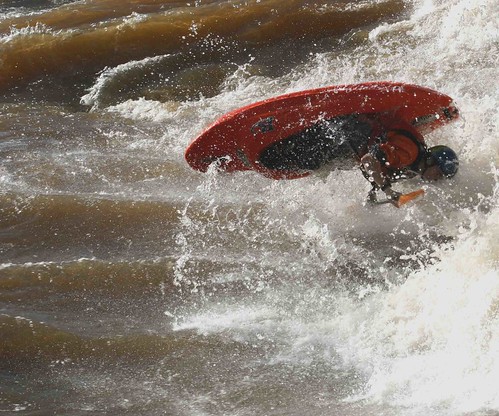
Therefore, the goal of this article is to explain certain subtle principles associated with wave tricks and why it is important to understand those principles when trying wave maneuvers (such as blunts, backstabs, pan-ams, airscrews, etc). In understanding these principles, the paddler can become aware of what he/she is doing correct and/or incorrect, whereupon the paddler can improve with his/her newly gained knowledge on the subject (and therefore learn how to do the new trick and have more fun while paddling).
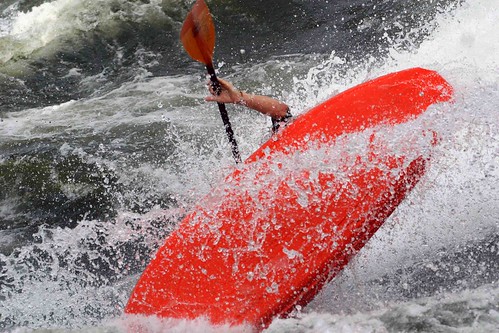
Identifying the Wave:
This is the first step in the process. In order to understand this discussion, one must know the various parts of a wave. A wave contains:
1) Peak, Top, or Crest: the uppermost end of the wave.
2) Foam Pile: the white frothy water recirculating back upstream found on some waves
3) Face or Wave Face: the part of the wave where maneuvers are performed. This is the middle part of the wave. Sometimes the face can be under a foam pile, green (meaning that it does not have any sort of recirculating water on it), or a combination of the two.
4) Trough or Pit: the bottom of the wave, usually the place where you end up front surfing in between moves and the place where most bow pearls occur.
5) Shoulder, Wave Shoulder, or Rib: a key part of the wave, and integral to this discussion. The shoulder is best defined as the irregularity in the wave. Often found on the sides of the wave (but not always). Shoulders can be very defined (such as the shoulders at Garborator) or very subtle (such as in some holes).
6) Seam: where the foam pile and the face or trough intersect.
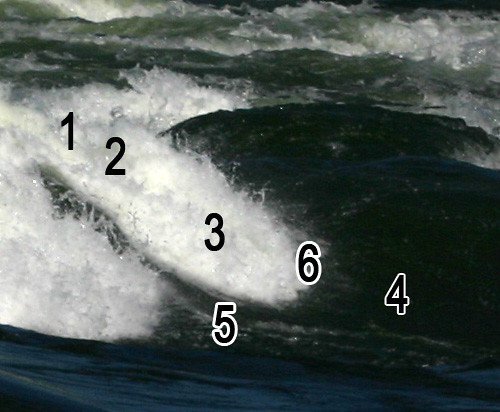
Wave Boating Principles:
The principles can be broken down into three (3) basic parts:
1) Speed
2) Bounce
3) Edge Transition
When doing moves on waves, the combination of these three principles will help to accomplish the move, make it more dynamic, and, possibly, give the move some air. So, this discussion will take these three principles and break them down individually.
1) Speed:
Speed is absolutely the most important factor when doing wave maneuvers. Basically, you want to have as much speed as possible when doing any type of wave maneuver. In order to get the most speed, you must go to the crest of the wave (the top). Try to get as high up on the wave as possible. The more speed you have coming down, the more dynamic the move will be, the bigger your bounce will be, and the chances of completing the maneuver increase exponentially.

A great tip to increase your speed coming down the wave is the use of a vertical paddle stroke. You may see some paddlers who, upon getting to the top of the wave, use a vertical paddle stroke to further increase their speed as they accelerate down the wave. This stroke can "make or break" the wave maneuver. Usually, just getting to the top of the wave and bouncing down is not enough. Using this vertical paddle stroke will help paddlers to further accelerate down the wave, providing more speed in order to accomplish the maneuver.
Vertical Paddle Stroke and Bounce on Edge, Lachine Waves, Quebec, Canada (above).
2) Bounce:
Bounce is the second most important factor in wave tricks. After you have gotten to the top of the wave, you begin to accelerate down and gather speed, you must bounce in order to get the boat out of the water (after all, the goal of all wave tricks involves a moment of separation from the water which enables the kayak to switch ends or edges weightlessly, such as in a blunt or airscrew).
Good bounces are ones that are initiated near the feet. In this, the paddler is aiming to actively push the feet down and into the wave (this concept is similar to flat spins, where the rotation points are at the feet, and about a foot or two behind the butt)
.
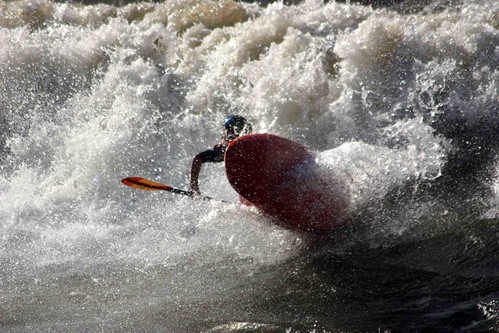
Adam Johnson, New River Dries, WV, USA.
The best bounces come from those that are initiated onto an edge. In other words, one will be more successful when bouncing onto an edge. To do these types of bounces, actively throw your weight forward and push your feet into the wave while putting your boat on edge. It is best to aim for a shoulder while doing this speed/bounce/edge transition combination. Your weight should be directed towards either side (ie-the right or left side) whilst leaning forward and on edge.
Bounce Physics:
When bouncing, what is happening with the water and the boat? Firstly, every boat has rocker on either end. When one bounces, that depression (rocker) is filled by water. Since the boat does not transform (it is a hard surface), that space between the water and the boat when bouncing causes the boat's bow to lift, filling the depression. The results- the bow first gets pushed down (bounce, equal and opposite reaction for every action), the rocker on the stern forms a depression, whereupon the depression fills, causing the bow to lift up.
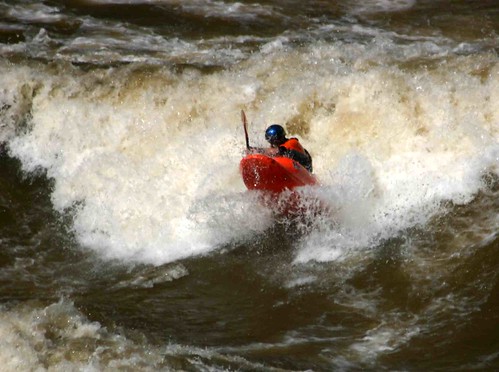
Depression Filled, New River Dries, 35,000 CFS.
So, think of having the rocker as more than something that helps you to not pearl while surfing. Use it to your advantage and incorporate it into wave maneuvers.
3) Edge Transition:
Edge Transitions are another very important aspect of wave moves. Again, much like the rocker on your kayak, there is a reason why boats are wide at the cockpit, then narrow down at each end. When one combines bounce with an edge transition, this enables the kayak to lift off of the edge. The benefit to this is that your bow and stern, while on edge, provide much less surface area for the water to deal with than when your boat is flat (in other words, when your kayak is flat, there is a big surface area and when the kayak is on edge, that surface area decreases). This can be compared to recovering after your kayak pearls in a hole or on a wave.
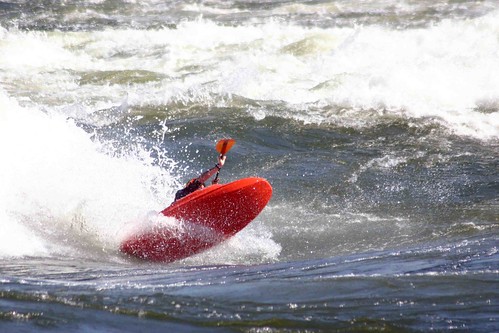
Adam Johnson, Lachine, Montreal, Quebec.
So, when one does the bounce, it is best to do it onto an edge. After this bounce is transferred onto either edge, immediately try to lean slightly back and lift your knees. While doing this, enact the edge transition, as this will bring your bow further into the air. At this point, the edge transition should be finished or almost finished and your weight and body should be going into whichever move you want to do (blunt, pan-am, pistol flip, whatever). Basically, the more dynamic this edge transition, the better chance you have of completing the maneuver.
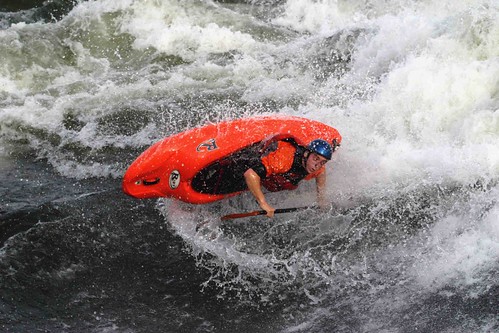
Adam Johnson, Nile Special Wave, Uganda.
Summary:
Combining these three elements (speed, bounce, and edge transition) while doing moves on waves or on wave shoulders will increase the paddlers wave boating skills.
Speed: Get to the top of the very top of the wave and put in a vertical paddle stroke on your way down to maximize your speed.
Bounce: On your way down, throw your weight forward and onto an edge. Remember to actively push the kayak into the wave somewhere near your feet.
Edge Transition: Make this dynamic! Physics laws dictate, much like the "white table cloth theory" (object at rest stays at rest, object in motion...), that the faster the edge transition, the more lift you will get off the wave.
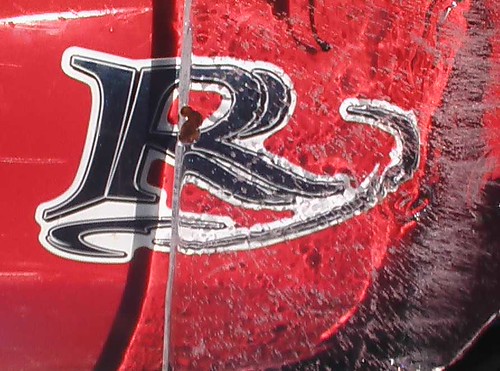
This article may make these principles sound very complex and intricate. The bottom line is that these principles are not hard to grasp. After understanding the physics behind wave paddling and what the boat and water are doing, the paddler will be able to harness the rivers, boats, and individuals' skills in order to have more fun while kayaking.
Clickable photos here
Have fun reading this article and happy holidays!
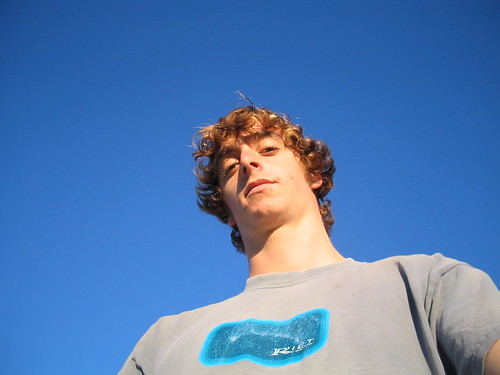
-Adam Johnson
Whitewater Freestyle



2 comments:
I think you like posting pictures of yourself.
The reason that I have posted these pictures is because these are whats on the computer that I used to make this blog post. Furthermore, I have permission to use the photos. I would have used others, but the opportunity did not arise.
I also think that it is nice to have lots of photos; otherwise, people would just see this huge body of text and turn their head and puke on the floor before leaving the blog.
Happy Paddling and Happy Holidays,
-RiotAJ
Post a Comment